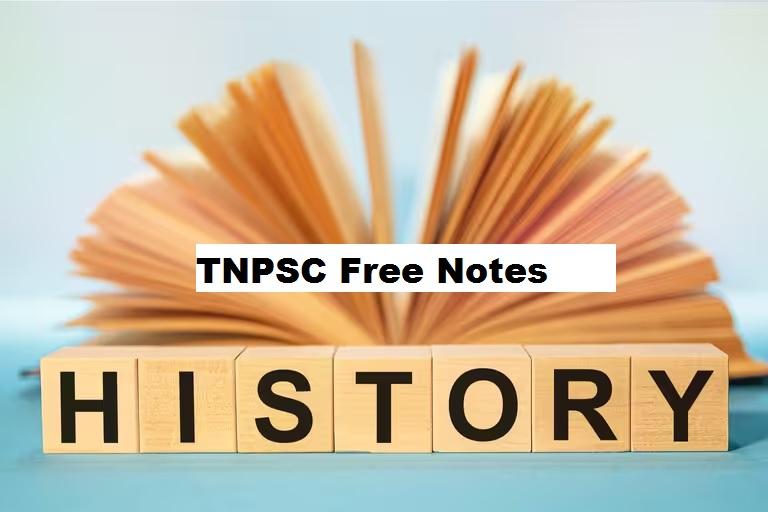இந்தக் கட்டுரையில், TNPSC குரூப் 1, குரூப் 2, குரூப் 2A, குரூப் 4 மாநிலப் போட்டித் தேர்வுகளான TNUSRB, TRB, TET, TNEB போன்றவற்றுக்கான முறைகள் இலவசக் குறிப்புகளைப் பெறுவீர்கள்.தேர்வுக்கு தயாராவோர் இங்குள்ள பாடக்குறிப்புகளை படித்து பயன்பெற வாழ்த்துகிறோம்.
Chola Societ
Agrarian society
Chola society was primarily an agrarian society.
Landholding was the prime determinant of social status and hierarchy.
The Brahmin landholders were called as brahmadeya-kilavars at the top brahmadeya
settlements with tax exemption were created, displacing (kudi neekki) the local
peasants.
The landholders of vellanvagai villages were placed next in the social hierarchy.
Ulukudi (tenants) could not own land but had to cultivate the lands of Brahmins and
holders of vellanvagai villages.
While landholders retained melvaram (major share in harvest), the ulukudi got kizh
varam (lower share).
Labourers (paniceymakkal) and slaves (adimaigal) stayed at the bottom of social
hierarchy.
The lands which where gifted to temples were as devadana, which were exempted from
tax, as in brahmadeyams.
The temples became the hub of several activities during this period.
Position of women
The practice of “sati” was prevalent among the royal families.
The devadasi system or dancing girls attached to temples emerged during this period.
Women had the habit of saving money called “Sirupadu”.
Caste system
The inscriptions of the later period of the Chola rule mention about two major divisions
among the castes
Valangai
Idangai
However, there was cooperation among various castes and sub-castes in social and
religious life.
Others in society
Outside the world of agrarian society were the armed men, artisans and traders.
Cattle-keepers constituted a considerable section of the population.
There certainly were tribals and forest-dwellers, about whom our knowledge is scanty.
Religion
Both Saivism and Vaishnavism continued to flourish during the Chola period.
Importance of Temples
A number of temples were built with the patronage of Chola kings and queens.
The temples remained centres of economic activity during this period.
The mathas had great influence during this period.
The temples were provided vast areas of land and a considerable section of population
came under their influence.
Saivism
Chola rulers were ardent Saivites.
Parantaka I (907–953) and Uttama Chola (970–985) made provisions and gifted the
lands to promote religion.
In a fresco painting in which Rajaraja I is portrayed with his wives worshiping Lord Siva in
Thanjavur Brihadishvarar temple.
One of the titles of Rajaraja I is Siva Pada Sekaran, i.e. one who clutches the foot of Lord
Siva.
Siva was the prominent god for the Cholas and he was represented in two forms.
The iconic form of Siva was Lingodhbhava, and the Nataraja idol was the human form.
The repeated representation of Tripurantaka (the destroyer of three mythical cities of
asura) form of Siva in sculpture and painting gave him a warrior aspect and helped in
gaining legitimacy for the ruler.
The representation of Nataraja or Adal Vallan (king of dance) in the form of idol was the
motif of Tamil music, dance and drama with hymns composed by Nayanmars, the Saiva
saints.
These hymns sang the praise of Siva and extolled the deeds of god.
They held great appeal to the devotees from different social sections.
The Saiva canon,the Thirumurai, was codified after it was recovered by Nambi Andar
Nambi.
Oduvars and Padikam Paduvars were appointed to sing in the temples to recite
Thirumurai daily in the temple premises.
The singers of hymns were known as Vinnappamseivar.
The players of percussion instruments also were appointed.
Girls were dedicated for the service of God.
Musicians and dance masters also were appointed to train them.
A highly evolved philosophical system called Saiva Siddhanta was founded during this
period.
The foundational text of this philosophy, Sivagnana Bodham, was composed by
Meikandar.
The devotion of Chola rulers to Saivism became a strong passion in due course of time.
Kulothunga II, for instance, exhibited such a trait.
The theological tussle was fierce between state religion, Saivism, and Vaishnavism so
much so that Vaishnavism was sidelined to the extent.
Because of the above events, its apostle Sri Ramanujar left the Chola country and went
to Melkote in Karnataka.
Trade
Trade existed at three levels,
Local
Overland
Overseas
Increased production in agriculture as well as artisanal activities led to trade and
growing exchange of goods for goods.
Two guild-like groups are known as
Anjuvanattar
Manigramattar
Anjuvannattar comprised West Asians, including Jews, Christians and Muslims. They
were maritime traders and were settled all along the port towns of the west coast.
Manigramattar were busy with trade in the hinterland.
They settled in interior towns like
Kodumbalur
Uraiyur
Kovilpatti
Piranmalai and others.
In due course, both groups merged and got incorporated under the banner of
Ainutruvar
Disai-ayirattu-ainutruvar
Valanciyar
They were functioning through the head guild in Aihole in Karnataka.
Ainutruvar guild controlled the maritime trade covering South-east Asian countries.
Centres of the maritime trade
1. Munai-santai (Pudukkottai)
2. Nagapattinam
3. Mylapore and Tiruvotriyur (Chennai)
4. Vishakapattinam
5. Krishnapattinam (south Nellore)
The chief ports had light houses, which were called Kalangaraillangusudar.
Exports – sandalwood, ebony, condiments, precious gems, pepper, oil, paddy, grains and
salt.
Imports – camphor, copper, tin, mercury and etc.
Traders also took interest in irrigation affairs.
Valanciyar, a group of traders, once dug an irrigation tank called Ainutruvapperari in
Pudukottai.
Commerce and trade were brisk with trunk roads or peruvazhis and merchant guilds.
Gold, silver and copper coins were issued in plenty at various denominations.
Barter system was prevalent. Commercial contacts between the Chola Empire and
China, Sumatra, Java and Arabia were extensively prevalent.
Arabian horses were imported in large numbers to strengthen the cavalry.
**************************************************************************
| Adda247 TamilNadu Home page | Click here |
| Official Website=Adda247 | Click here |









